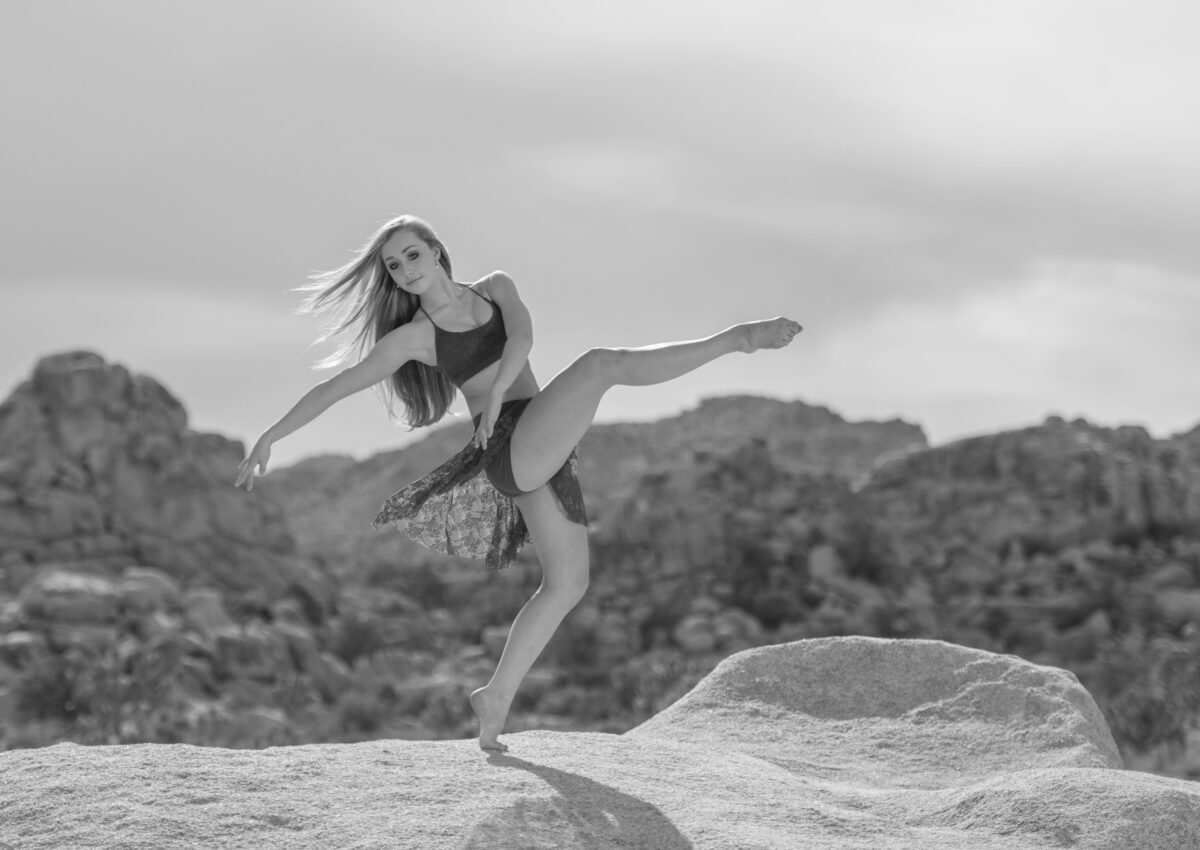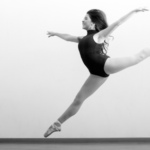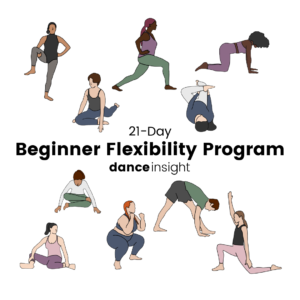
If you’re looking for a quick answer, here’s the tl;dr:
If you dance at any level above beginner, there is space for you in the professional world if you’re willing to think outside the box.
If you’re looking for a more in-depth explanation, read on!
Disclaimer: This is just my observation as a dancer, teacher, and choreographer who’s been in the industry for a number of years. I can’t speak to the opinions of those who work in directing and casting.
What does it mean to be “good” at dance?
Ask 20 different people and you’ll get 20 different answers.
Dance is an art form at its core (and sometimes a sport, but that’s another discussion), which means that skill and excellence in dance isn’t 100% measurable. Even the elements of dance that are measurable – such as technique and rhythm – are somewhat subjective. For this reason, a lot of people would say that there’s no such thing as being good or bad at dance.
I know that doesn’t help answer your question, though. If you’re asking the question “am I good enough to be a professional dancer?” you’re probably looking for a skills checklist or some way to self-evaluate. Unfortunately, while other disciplines have easy metrics to look at (i.e. run X distance in Y time to qualify for the Olympics), dance isn’t so cut and dry. But I’ll give you what I can.
We’re going to focus on technique, skills/tricks, and performance quality when we talk about being “good” at dance. Just remember that your ability on individual tricks does not define your worth as a dancer.
You may also want to read my post on the most common tricks at professional dance auditons!
What’s your general skill level as a dancer?
Setting aside the subjective nature of measuring a dancer’s ability, let’s set a frame of reference for how “good” you are at dance.
I’m going to use Broadway Dance Center‘s breakdown of dance skill levels, combined with some generalizations of my own. See which one sounds like the best fit for you.
If your training has been sporadic and “years of experience” doesn’t really apply, think of a “year’s experience” as about 30 classes. I say 30 because if you took class once a week for a school year, that’s about how many weeks it would be.
- Level 1: Basic
- Brand new beginner or 1-2 years’ experience.
- In ballet terms, Vaganova level 0 to 1B.
- In competition dance terms, minis/petites.
- Level 2: Beginner
- 2-5 years’ experience.
- A “mover” would fit in well here.
- In ballet terms, Vaganova level 1A to 2B.
- In competition dance terms, juniors.
- Level 3: Advanced Beginner
- 5-8 years’ experience.
- This is a really broad level that covers everyone from a more skilled “mover” to someone who has pretty solid technique.
- In ballet terms, Vaganova 2A to 3.
- In competition dance terms, advanced juniors to teens.
- Level 4: Intermediate
- 8-10 years’ experience.
- If you grew up dancing at a recreational studio, you’re probably here.
- In ballet terms, Vaganova 4 to 5.
- In competition dance terms, advanced teens to seniors.
- Level 5: Intermediate Advanced
- 8-10 years’ experience.
- If you grew up dancing at a pre-professional studio, and/or have a college or conservatory degree in dance, you’re probably here.
- In ballet terms, Vaganova 5 and up, or trainee level.
- In competition dance terms, advanced seniors, or the really talented kids that you see on shows like Dance Moms.
- Level 6: Advanced
- 10+ years’ experience
- World class dancers, i.e. Broadway, New York City Ballet, So You Think You Can Dance. A level of skill and technique that the average dancer never reaches.
Can you really get a professional dance job if you don’t have advanced technique?
Oh absolutely.
If you’re open to thinking outside the box, I 100% believe that you can get a professional dance job if you’re Level 2 (from above) or higher.
I’ve met people who dance at Level 2/3 who work as:
- Costume character dancers
- Parade performers
- Singers who dance or “do movement” with the ensemble
- Dancers in shows at smaller theme parks
- Dancers/hosts in interactive shows for young children
At this level, you’ll be more limited in the dance jobs you can get, but it’s important not to think of dance jobs as tiered, or one being better than another. Thinking you’re only a “real” professional dancer if you make it to Broadway is like if a software developer thought they were only a “real” developer if they worked for Google. No. If you do something for a living, it’s your profession, which makes you a professional.
If you’re a level 2/3 dancer as defined above, it’s helpful to have additional skills like acting and singing, but you can absolutely make a living dancing.
The intermediate/advanced threshold
The majority of professional dancers I’ve worked with would fall under level 4/5. (I’d put myself there as well.) I’ve seen them work as:
- Cruise ship dancers (more on the level 5 side)
- Dancers at major theme parks, and the bigger shows at smaller parks
- Dancers on national tours (probably level 5 only)
- Gig dancers for production companies
- Costume character dancers at major theme parks and in touring shows
- Dancing ensemble roles at regional theaters
- Members of smaller dance companies
- Trainees/Second Company members at major dance companies (definitely level 5)
- Starting their own dance companies and creating their own opportunities
There’s a kind of a threshold that you reach at level 4/5 that’s important to know about. At this level, your skills actually don’t matter as much. That’s because every single person in the audition room has the skills required to do the job. Now it’s more about standing out, or having the look that the casting director wants.
Because level 4/5 is about standing out, it’s really important to figure out what your niche within a dance style is. Are you “classy old style character shoes jazz” or are you “sexy hip-hop-adjacent jazz”? Are you “competition dance contemporary” or are you “college modern”? Think about what you’re good at as well as what feels good and natural in your body. Look for dance roles that will let you show that side of yourself. You’re much more likely to stand out in an audition room if you’re in your element.
Don’t be the first person to tell you no
I don’t want anyone’s takeaway from this post to be “I guess I’m not cut out to be a dancer.” I want you to come away from this post having realstic expectations and an idea of what to be auditioning for at this stage of your career. None of this should stop you from going to any audition, though. If your dream role is hiring, GO.
Don’t be the first person to tell you no. If you think you’re not qualified or “good enough” for a role, show up anyway and let the casting team make that decision for themselves. You never know what could happen. And then, even if you don’t make the cut, don’t give up after one try. Keep auditioning, keep improving, keep working!
In Conclusion
So what’s the answer to “am I good enough to be a professional dancer?”
As I said at the beginning, if you dance at any level above beginner (or “basic/level 1” according to BDC’s list), then there’s a place for you in the professional world. You just have to think outside the box. Expand your idea of what a “real” professional dance job is.
When I first got out of college, I never would have auditioned for a costume character role because I thought it wasn’t “real dancing.” Then I landed my first professional gig as a costume character (after getting cut in the first round at the dancer audition). Turns out, dancing as a costume character was extremely challenging, even for someone who had been dancing for 17 years. I will never think of it as “not real dancing” again.
So whether you end up as a character in a show at your local theme park, or a principal in the New York City Ballet, you will be getting paid to dance, and that will make you a professional dancer. And remember, just because you start in one place doesn’t mean you can’t keep improving your skills and striving for more.
You are good enough. Now get out there and audition!







